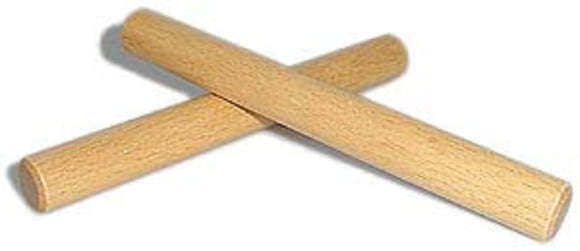5. Music Styles
Cuban music evolved from a mixture of African and European (especially Spanish) elements that can still be heard in its melodies, rhythms and instrumentation. Rhythm instruments such as congas, bongos, timbales, cajon, cowbell, claves, maracas and guiro all play an important role in Afro-Cuban music. The main characteristics of this music, and also some of the music of Africa in its original forms, are:
- The use of call and response (question and answer) between solo voice and choir.
- The use of polymeters (i.e. the simultaneous use of different meters such as 4/4 and 6/8 time signatures)
- Polyrhythms (the use of different rhythmic divisions on top of one another)
- Pentatonic and non-Western scales with the melody.
The concept of clave is integral to an understanding of Afro-Cuban music. The word clave (Spanish for keys) describes both an instrument and a rhythmic structure which acts as a framework that the other rhythmic instruments must complement. The rhythmic interaction of the other instruments should follow and not contradict or distract from the underlying clave pattern. The most important clave rhythms in Cuban music are the son clave and the rumba clave...
| Son Clave |
|---|
| I | | | | II | | | | | III | | | | IV | | | | | Beat |
| 1 | + | 2 | + | 3 | + | 4 | + | | 1 | + | 2 | + | 3 | + | 4 | + | | Counting of the eigth´s |
| X | | | X | | | X | | | | | X | | X | | | | | Hits |
... and the ...
| Rumba-Clave |
|---|
| I | | | | II | | | | | III | | | | IV | | | | | Beat |
| 1 | + | 2 | + | 3 | + | 4 | + | | 1 | + | 2 | + | 3 | + | 4 | + | | Counting of the eigth´s |
| X | | | X | | | | X | | | | X | | X | | | | | Hits |
There are two variations on these Clave rhythms designated 3-2 (above) or 2-3 (below). The two halves of the patterns remain the same but their order in the sequence is reversed.
| Son-Clave |
|---|
| I | | | | II | | | | | III | | | | IV | | | | | Beat |
| 1 | + | 2 | + | 3 | + | 4 | + | | 1 | + | 2 | + | 3 | + | 4 | + | | Counting of the eigth´s |
| | | X | | X | | | | | X | | | X | | | X | | | Hits |
... and the ...
| Rumba-Clave |
|---|
| I | | | | II | | | | | III | | | | IV | | | | | Beat |
| 1 | + | 2 | + | 3 | + | 4 | + | | 1 | + | 2 | + | 3 | + | 4 | + | | Counting of the eigth´s |
| | | X | | X | | | | | X | | | X | | | | X | | Hits |
If you look closely youll notice the two clave rhythms are very similar and differ only in the timing of one note, in each case the third note of the three-note bar. In the rumba clave this note occurs one quaver (eighth note) later than in the son clave. Knowledge of these rhythms is essential to understanding and being able to play Afro-Cuban music.
The son clave was essential in the advancement of Afro-Cuban music, as was its mixture with jazz and the emergence of salsa. The son unites Cuban music with Spanish and Afro-Cuban elements of melody and rhythm, and originated in the 19th century in the rural areas of the eastern region of Cuba. The typical instruments used were the guitar, the tres (a Cuban variant of the guitar) and later the bass, with percussion instruments such as bongos, maracas, claves and guiro. Two of the instruments developed in connection with the Son: the tres and the bongos. The mutual influence between Cuban son and North American jazz began in the early 1920s. Cuban music spread, along with Puerto Rican music and other music from the Caribbean, to New York and eventually all across America. The emigration of musicians from those areas to New York along with the development of mass media and recording contributed to the expanding popularity of these forms of music. New dance styles such as the cha cha, the mambo and modern rumba became very successful between 1940 and 1960 in America and Europe.
The term salsa (actually Spanish for sauce) became a general term for these styles of music in the 1960s. As a musical category salsa encompasses a variety of different styles and rhythms including plena and bomba from Puerto Rico, cumbia from Colombia, tamborito from Panama, son and rumba from Cuba as well as boleros from other countries.
In summary
son plus jazz and other Afro-Cuban rhythms developed into the modern mambo and cha cha. In the 1960s Afro-Cuban elements combined with soul to develop, largely in New York, a danceable yet spicy musical sauce, which we now call salsa.


